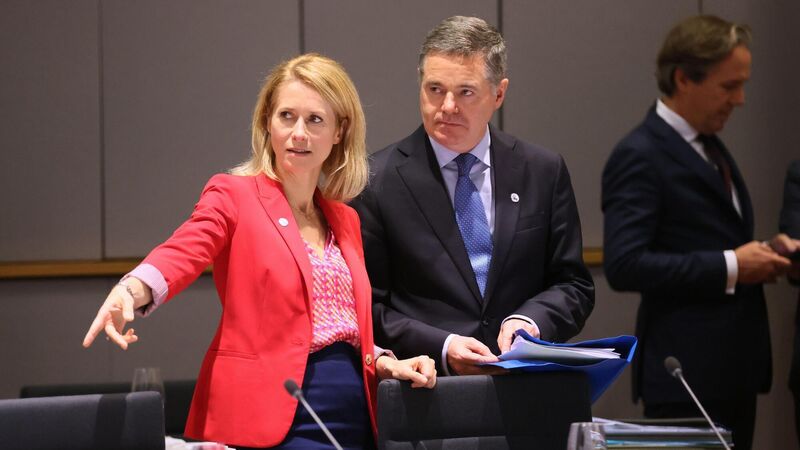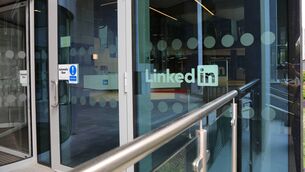David McNamara: Irish economy shows strength in adversity

EU foreign policy chief Kaja Kallas with finance minister and president of the Eurogroup Paschal Donohoe. Ireland’s economy has proven robust to global uncertainty and an escalation in trade tariffs, leading to a stronger than previously expected outlook for the domestic economy in AIB’s latest Economic Outlook. Picture: AP Photo/Francois Walschaerts
Ireland’s economy has proven robust to global uncertainty and an escalation in trade tariffs, leading to a stronger than previously expected outlook for the domestic economy in AIB’s latest Economic Outlook.
In recent months, the uncertainty created by the imposition of US tariffs has begun to dissipate. The US has agreed to a succession of trade deals, including the 15% baseline on EU exports. Amidst these tentative moves towards trade settlements, international forecasters such as the IMF have been revising up expectations for global GDP growth, following downgrades to forecasts in the immediate aftermath of US president Donald Trump's ‘Liberation Day’ in April.
However, geopolitical uncertainty remains high and because of that, consumer spending and business investment growth in Ireland are still expected to cool. Nevertheless, amid the improved international outlook, I now expect Irish modified domestic demand growth to be above 3% this year, easing to 2.5%-3% in 2026 and 2027, an upgrade on the May 2025 forecast.
Irish households are expected to ease spending growth while some business sectors may delay planned investments, particularly those in export-oriented sectors, but adoption of AI technologies could also boost business spending.
Recent consumer spending has been robust. Public and private sector balance sheets have low debt levels and high savings on aggregate. While economic risks are tilted to the downside, balance sheet resilience has continued to strengthen.
The labour market will continue to grow, but given the expected easing in economic growth next year, a more modest expansion in employment is likely. Following the spike in economic uncertainty in April, Irish businesses appear to have pulled back on hiring activity. Following a 2.7% rise in 2024, jobs growth is likely to slow to just less than 2% in the coming years.
Further shifts in US trade and economic policy are among the main downside risks to the Irish economy right now. Some indigenous Irish export sectors may now be exposed to higher US tariffs, but there have also been some key carve-outs below the headline 15% rate for generic pharmaceuticals and aircraft parts in the US-EU deal. This should mean Ireland’s effective tariff settles below that headline 15% rate.
In terms of upside risks, a further easing in global uncertainty could underpin stronger domestic spending and investment in the coming years. My central assumption is that Irish households continue to edge savings rates higher. However, a brightening geopolitical outlook might spur even stronger spending than we anticipate in the coming years.
While the risks remain tilted to the downside, the Irish economy has shown remarkable resilience to global shocks in recent years, and the economy is set to continue to outperform European peers.










